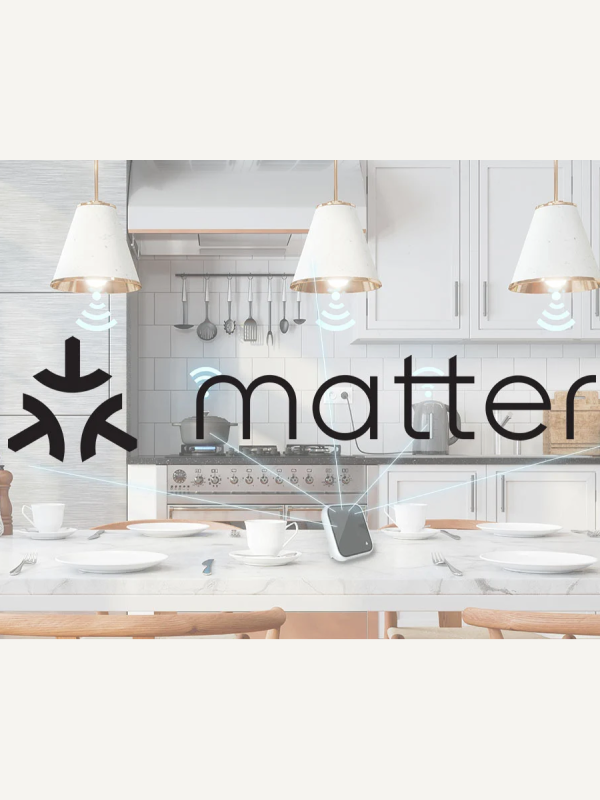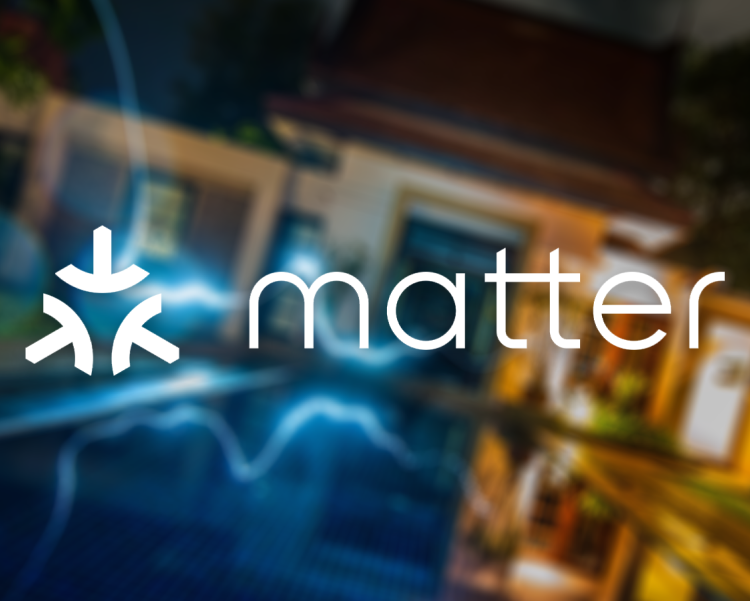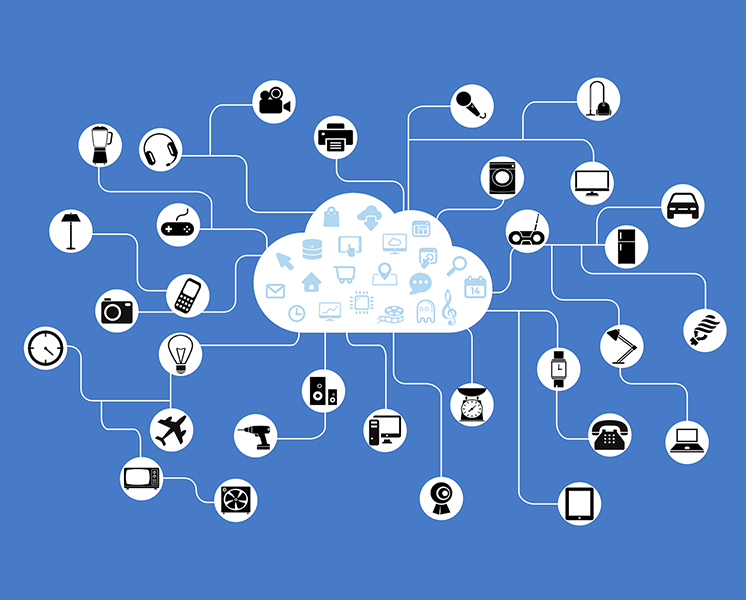Nowadays, we can put computer chips in almost anything and transform them into smart gadgets. They are known as the Internet of Things (IoT) devices, and they have the potential to improve our innovative home experience significantly. They are always connected to our home networks, collect and share data, and can conduct specified actions.
You may already have a few IoT gadgets in your house, such as intelligent lights and speaker systems, smart thermostats, or even a washing machine with WiFiWiFi capability.
If you already have numerous IoT gadgets distributed throughout your home, you're probably aware that things don't always operate as they should. Whether it's because the original setup was a little shaky or because some of your devices aren't compatible with one another, today's smart home is still a little rough around the edges.
This is where Matter comes into the picture!
- What Is Matter Connectivity Protocol?
- Bringing All Devices Together
- Matter Compatible Smart Home Devices
- Future of Existing Smart Home Devices
- Other Connectivity Protocols
What Is Matter Connectivity Protocol?
One of the numerous challenges that today's IoT gadgets confront is how they connect to the internet and communicate with one another across the home. Matter, known initially as Project CHIP, is a single protocol that will assist in bringing all of our innovative home devices together, so to speak, under one roof.

Matter is a new smart home standard developed in 2019 by Project Connected Home Over IP (Project CHIP). The Connectivity Standards Alliance (CSA), formerly known as the Zigbee Alliance, currently maintains it. The standard is royalty-free and was designed to promote interoperability among various devices and platforms. The CSA has successfully brought all of the major platforms on board, including Apple HomeKit, Amazon Alexa, Google Home, and Samsung SmartThings.
It also solves a typical source of frustration for smart home users: connectivity. IoT devices are so reliant on the cloud that everything stops operating when they lose internet connectivity. Matter will enable your devices to run without constant access to the cloud. Less dependency on the cloud provides more security for your devices, which is another critical point for Matter. In short, the ultimate goal is to make the smart home user experience the best it can be.
Bringing All Devices Together
Matter employs a wireless technology based on Internet Protocol (IP), the same protocol used by WiFiWiFi routers to assign an address to your connected devices. By natively integrating an IP-based protocol for smart home devices, there are no awkward handoffs or other wireless technologies to contend with. It sets the path for a future in which all Matter-certified gadgets coexist in synchronous harmony.

As you can see, grouping our smart home devices in this way not only simplifies setup but it's also critical for developing a single universal smart home experience that works. The ultimate goal is to create a "set it and forget it" situation in which these devices fade into the background rather than sitting in the foreground. Thankfully, Matter is the solution we've been looking for to finally bridge that gap and solve the smart home problem.
Matter will support:
- Lighting products (plugs, lightbulbs, switches, and so on)
- Security locks
- Thermostats and other cooling and heating controllers
- Blinders and drapes
- Home protection sensors (such as door and window sensors, motion sensors, and smoke and carbon monoxide detectors)
- Garage door controlling devices
- Wireless APs and bridges
- Televisions and streaming video players
When it debuts in the fall: Matter Smart Home Release Date For Home Automation.
Matter's future iterations include support for home appliances, robotic vacuums, and energy management tools (such as solar panels, electric vehicle chargers, and home battery packs). According to Chris LaPré, the CSA's head of technology, security cameras are expected to be added in a future iteration due to camera manufacturers such as Arlo, Eve, TP-Link, and Wyze joining the CSA, although no formal effort has begun.
Matter Compatible Smart Home Devices
It all depends. Matter now supports devices that connect to the internet via WiFi, Ethernet, and Thread, a revolutionary low-power wireless network. (The standard also supports Bluetooth, but only for initial device configuration.)
If an existing device employs one of those connecting ways and has enough memory and processing capability to support Matter, a software update could enable it to keep the standard. If a device does not employ one of those communication ways, the manufacturer could build (or update) an existing bridge to support Matter.
Signify (manufacturer of Philips-branded lighting products) has announced that the bridge for its Philips Hue intelligent lightbulbs will be updated to support Matter. However, Belkin (the creator of Wemo smart home devices) said that updated versions of its smart plug, smart light switch, and intelligent dimmer switch would be released to support Matter over Thread. Existing Wemo products that do not use Thread will not be supported by Matter. And, despite receiving a Matter-compatible bridge this fall, it appears that Ikea smart home gadgets will not support Matter. According to internal sources, Matter is set to be used in the following IKEA smart home solutions.
Future of Existing Smart Home Devices
The following existing devices will be updated to support Matter:
- All Apple devices running iOS 16, iPad OS 16, HomePod OS 16, tvOS 16, and watchOS 16
- All Eero Beacon, Eero Pro, Eero Pro 6, and Eero 6 mesh WiFiWiFi routers
- All Eve devices with Thread
- All Google Nest smart speakers and displays, Google Nest WiFiWiFi routers, Google Nest Thermostat
- The forthcoming IKEA Dirigera smart home hub
- Philips Hue sm (via a new plug-in module)

Other Connectivity Protocols
Smart gadgets in a safe, connected world must be able to exchange data with numerous devices. To do so, they must communicate in the same language defined by communication protocols.
Protocols describe how signals are conveyed from one device to another to initiate an action, such as turning on and off lights. Understanding the variations between protocols is critical when selecting appliances for an automated ecosystem since each protocol has different advantages and disadvantages based on the application.
Consortia, organizations, or associations construct communication protocols by having their members discuss and agree on the details of the jargon, describe it, and may even build hardware examples to illustrate it.

Zigbee
Zigbee is a wireless technology that uses a mesh network to communicate. A device relays a signal to other devices, strengthening and expanding the network. Zigbee can be integrated into dimmers, door locks, thermostats, and other devices. WeMo and Philips Hue, for example, employ it.
Z-Wave
Z-Wave, like Zigbee, is an open-source mesh network protocol. The most significant technical difference between the two is data transmission – Z-wave is around six times slower than Zigbee. However, it requires less energy to traverse the same distance as Zigbee. SmartThings and Lowe's Iris use Z-Wave.
Learn more >> Difference between Zigbee and Z-Wave
KNX
KNX is a decades-old open standard and one of the most common protocols for building automation. It uses multiple physical layers, including twisted pair cable, power line networking, infrared, Ethernet, and RF.
The system does not run from a central unit in a decentralized topology, which means that every single unit connected to the KNX ecosystem is bright in and of itself and does not rely on other parts to work. A significant advantage is that if one unit fails, the others can continue operating as usual.
Thread
A consortium of firms created a wireless protocol that includes Nest, Samsung, QUALCOMM, and OSRAM—designed to enable devices in its protocol to connect even if the WiFiWiFi network fails.
Bluetooth
A wireless protocol with a small range (about 10m) is commonly used on phones, headphones, and speakers. Its adaptive frequency hopping algorithm identifies existing signals like WiFiWiFi and negotiates a channel map for Bluetooth devices to reduce interference.
Concluding Remarks
According to the latest reports, matter is a revolutionary idea that will materialize in the fall of 2022. Once it starts, it will be easier for customers to choose devices from diverse brands, such as Apple, Samsung, Amazon, Google, etc.
Evvr does not need any introduction to the world of smart home devices. It offers a wide array of gadgets that use secure protocols to make all devices work in a frictionless manner. Evvr is also developing its line of Matter-compatible devices that will be available for purchase in the upcoming days! Evvr can offer you a comprehensive smart home solution whether you are an integrator, professional installer, distributor, or DIYer. Get in touch with us and book a sample product today!












